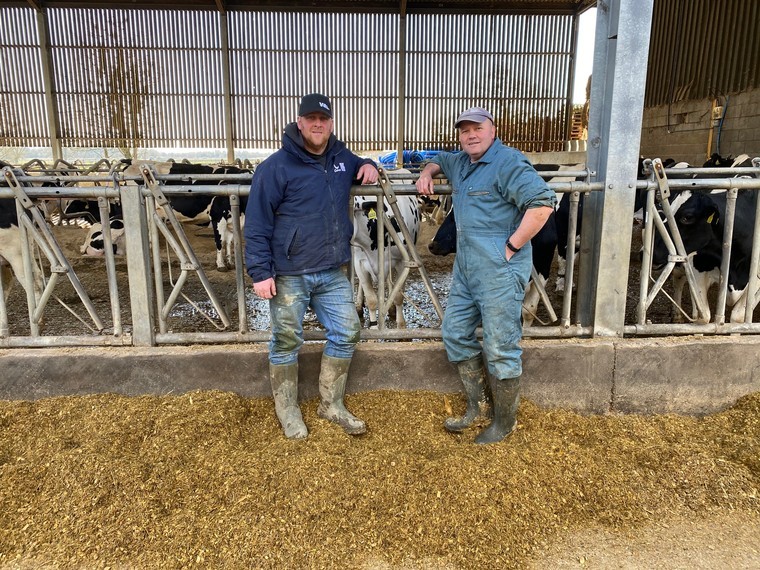Paying attention to close up cows and providing a consistent ration that’s fed the same, every day is what makes Buckinghamshire farmer, Mark Wood a winner when it comes to feed efficiency.
“For every mouthful of feed that goes in, I need to get as much out of it as I can,” explains Mark, who farms at Portway Farms, Twyford, Buckingham. “That’s about making quality silage and making sure that’s available to the cows; we feed out once a day, but we push up eight times a day.”
Mark’s keen eye for the detail was rewarded at the recent Cream Awards where he won the High Feed Efficiency Award, sponsored by Mole Valley Farmers.
High fertility gives Mark’s herd the edge, with the 310 cow herd yielding 12,000 litres and achieving a pregnancy rate of 24-25% and a calving interval of 385 days. Not carrying any stale cows ensures efficient production and a feed conversion efficiency of 1.5. The herd is producing 820kg of solids/ cow.
Mark views the dry cow group as “the most important group on the farm.” Get that right, he says and she’s more likely to hit the ground running at calving, stay healthy and maintain feed intakes. The same diet is fed throughout the dry period.
To minimise the natural drop in intakes around calving, all cows have a minimum of 17 days in the close-up straw yard. This limits social upsets at this crucial time, which can detrimentally impact on intakes.
In the close up group, every cow has 1.2m of feed space. The fresh cow diet will also be put straight in front of cows as soon as they calve and she’ll receive a rehydration drink within an hour to encourage intakes and boost energy. They then move into a low-stocked fresh cow group, with sand beds.
“Our dry matter intakes in the dry cows are around 14kg a cow a day, which is very high. That’s creating a big rumen so when she calves, she’s got a big appetite,” explains Mark.
Providing a consistent diet to every cow, day in, day out is also viewed as essential. This is helped with the use of Keenan InTouch system on the wagon which tells the driver how much of each ingredient needs to be added and when.
Promoting good rumen health also ensures efficient conversion of feed into milk. In the past, the farm struggled with sub clinical acidosis as a result of ground straw being sorted from the diet. They subsequently decided to introduce 1.5kg a head of Nutritionally Improved Straw (NIS) pellets into the milker’s ration. In the high group, this is fed with grass and maize silage, protected fat, a blend, molasses, urea, yeasts, minerals and water. Cows are fed to yield through out of parlour feeders. Mark believes the combination of NIS and water helps avoid sorting. The impact on performance has been marked with yields increasing by 300 litres/cow/year and butterfats rising.
“We’re feeding the same amount so the extra 300 litres has probably come from better feed efficiency from a better presented ration; most of which is down to the NIS pellets,” he explains.
Dr Chris Bartram from category sponsor, Mole Valley Farmers, believes the system at Portway Farms, demonstrates the value of attention to detail at every level of cow feeding and management.
“Getting as much performance from every mouthful is key to dairy efficiencies, whatever the system,” he says. “That ultimately comes down to excellent fertility and providing the cow with exactly what she needs in terms of ration balance and a comfortable environment.”




